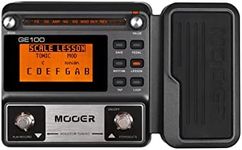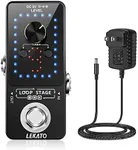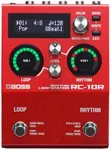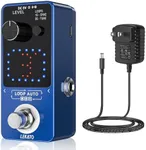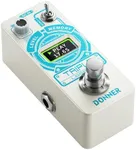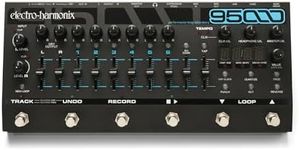Buying Guide for the Best Guitar Looper Pedals
Choosing the right guitar looper pedal can greatly enhance your playing experience, whether you're a beginner or a seasoned musician. A looper pedal allows you to record and play back loops of your guitar playing, which can be used for practice, songwriting, or live performances. To find the best looper pedal for your needs, it's important to understand the key specifications and how they align with your playing style and goals.Loop TimeLoop time refers to the maximum duration of a single loop that the pedal can record. This is important because it determines how long you can play before the loop starts repeating. Loop times can range from a few seconds to several minutes. If you plan to create complex compositions or need long loops for live performances, look for a pedal with a longer loop time. For simpler practice sessions, a shorter loop time may suffice.
Number of LoopsThis spec indicates how many separate loops you can store and switch between on the pedal. Having multiple loops can be useful for creating layered compositions or switching between different parts of a song. Beginners might be fine with a single loop, while more advanced players or performers might prefer a pedal that can handle multiple loops.
FootswitchesFootswitches are the buttons you press with your foot to control the looper pedal. The number and functionality of footswitches can vary. Some pedals have a single footswitch for basic start/stop functions, while others have multiple footswitches for more advanced control, such as switching between loops or adding effects. Consider how much control you need and whether you prefer simplicity or more options at your feet.
Input/Output OptionsInput and output options determine how you connect your guitar and other equipment to the looper pedal. Basic models may have a single input and output, while more advanced models offer multiple inputs/outputs, stereo options, or even MIDI connectivity. Think about your current setup and whether you need additional connectivity for other instruments, amplifiers, or recording equipment.
Memory StorageMemory storage refers to the amount of data the pedal can hold, which affects how many loops and how much loop time you can store. Some pedals have built-in memory, while others allow you to expand storage with external memory cards. If you plan to save many loops or need extensive loop time, look for a pedal with ample memory storage.
Built-in EffectsSome looper pedals come with built-in effects like reverb, delay, or modulation. These can enhance your loops and add variety to your sound. If you enjoy experimenting with different tones and effects, look for a pedal that includes these features. If you prefer a straightforward looping experience, a pedal without built-in effects might be more suitable.
Ease of UseEase of use is crucial, especially if you're new to looper pedals. Some pedals are designed with simplicity in mind, featuring intuitive controls and clear displays. Others might have a steeper learning curve with more complex features. Consider your comfort level with technology and how quickly you want to start looping. A user-friendly pedal can make the learning process smoother and more enjoyable.
DurabilityDurability is important, especially if you plan to use the pedal for live performances or frequent practice sessions. Look for pedals made with sturdy materials and solid construction. Metal housings and high-quality footswitches can withstand more wear and tear compared to plastic components. Think about how often you'll use the pedal and in what environments to determine the level of durability you need.
